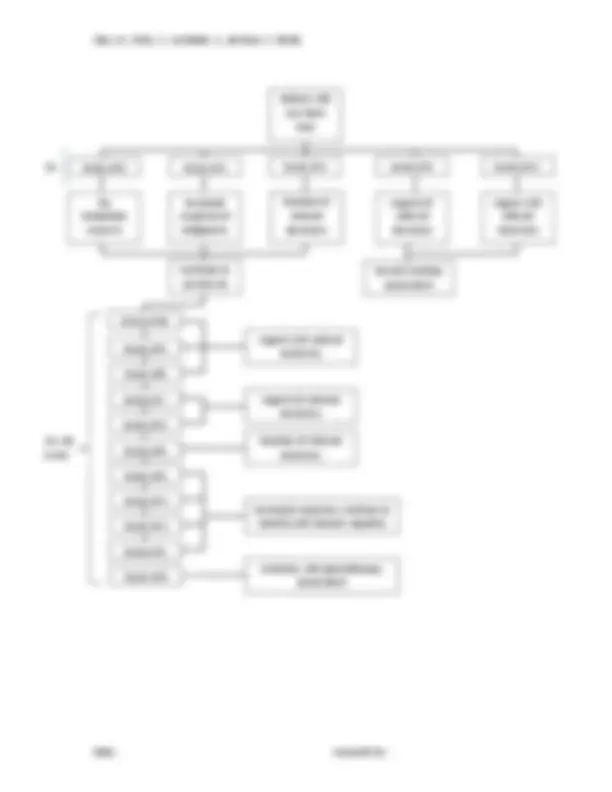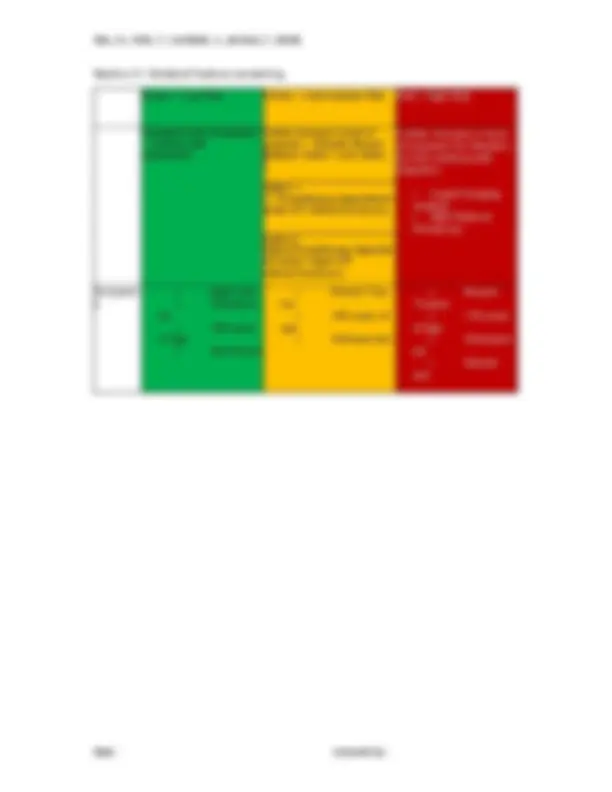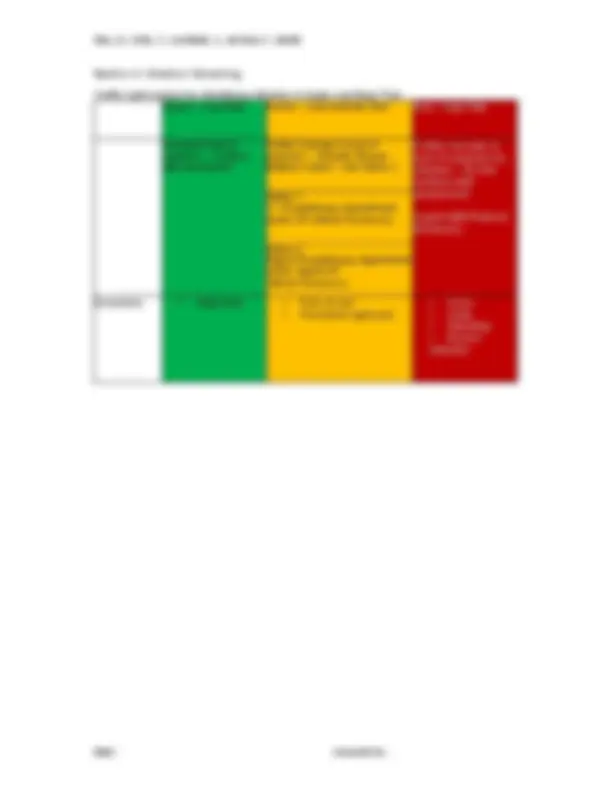





Study with the several resources on Docsity

Earn points by helping other students or get them with a premium plan


Prepare for your exams
Study with the several resources on Docsity

Earn points to download
Earn points by helping other students or get them with a premium plan
Community
Ask the community for help and clear up your study doubts
Discover the best universities in your country according to Docsity users
Free resources
Download our free guides on studying techniques, anxiety management strategies, and thesis advice from Docsity tutors
A screening tool for physiotherapists to assess patients with low back pain during remote assessments. The tool covers four sections: Cauda Equina Syndrome, Malignancy, Vertebral Fracture, and Infection screening. Each section uses a traffic light system to guide the questioning process and determine the level of suspicion. The physiotherapist should refer to the information given in each section for further guidance and incorporate their clinical judgement. The tool is based on evidence from numerous sources.
Typology: Slides
1 / 6

This page cannot be seen from the preview
Don't miss anything!




This is a screening tool to be used during remote assessments of patients presenting with
low back pain.
How to use the tool
The tool should be used to guide the questioning of patients during a remote physiotherapy
assessment.
The physiotherapist should go through each section chronologically and use the scoring
system or traffic light system to assist their diagnosis. They should refer to the information
given in each individual section for referral guidance.
Whilst this is a tool that compiles evidence from numerous sources, it is important that the
physiotherapist incorporates their own clinical judgement alongside this information when
deciding whether to refer patients on for further investigation.
Section 1: Cauda Equina Syndrome (CES) Screening
Green – Low Risk Amber – Intermediate Risk Red – High Risk
Increased level of
suspicion – Continue
with assessment
Further increase in level of
suspicion – Clinically Reason
Between Option 1 and Option 2.
Further increase in
level of suspicion for
Cauda Equina
Syndrome – Do Not
continue with
assessment
Urgent A&E Referral
Necessary
Option 1:
1:1 Physiotherapy Appointment
and/or GP referral Necessary
Option 2:
Urgent Physiotherapy Appointment
and/or Urgent GP
referral Necessary
Neurological Weakness in
Limbs.
Saddle Anaesthesia.
Weakness in Limbs and
Saddle Anaesthesia.
Urinary
Retention,
Followed by
Incontinence,
Recent Loss of
Bowel and Bladder
control, Saddle
Anaesthesia,
Weakness in
Limbs and Age
between 40-70.
Other Urinary
Retention.
Incontinence
Age Between
Recent Loss of Bowel
Control.
Recent Loss of Bladder
Control.
Urinary Retention,
Followed by Incontinence.
Section 2: Malignancy Screening
Does the patient have a past medical history of cancer?
Has the patient experienced unexplained weight loss >10% of their bodyweight within
the last 3-6 months?
Is the patient aged between 50-70?
Section 2A Score
Does the patient have unremitting pain that does not go away, even at rest?
Is the patient over the age of 70?
Does the patient have urinary retention?
Has the patient experienced unexplained weight loss <10% of their bodyweight within
the last 3-6 months?
Section 2B Score
Consult flow chart overleaf for referral guidance based on the patient’s score.
Section 3: Vertebral fracture screening
Green – Low Risk Amber – Intermediate Risk Red – High Risk
Increased level of suspicion
assessment
Further increase in level of
suspicion – Clinically Reason
Between Option 1 and Option
Further increase in level
of suspicion for Infection –
Do Not continue with
Objective
Urgent imaging
needed
A&E Referral
Necessary
Option 1:
1:1 Physiotherapy Appointment
and/or GP referral Necessary
Option 2:
Urgent Physiotherapy Appointm
ent and/or Urgent GP
referral Necessary
Symptom
s
Night pain
Osteoporo
sis
<50 years
of age
Steroid use
Recent Trau
ma
>50 years of
age
Osteoporosis
Recent
Trauma
>70 years
of age
Osteoporo
sis
Steroid
use
Section 4: Infection Screening
Traffic Light system for Identifying Infection in Acute Low Back Pain
Green – Low Risk Amber – Intermediate Risk Red – High Risk
Increased level of
suspicion – Continue
with assessment
Further increase in level of
suspicion – Clinically Reason
Between Option 1 and Option 2.
Further increase in
level of suspicion for
Infection – Do Not
continue with
assessment
Urgent A&E Referral
Necessary
Option 1:
1:1 Physiotherapy Appointment
and/or GP referral Necessary
Option 2:
Urgent Physiotherapy Appointment
and/or Urgent GP
referral Necessary
Symptoms Night pain Pain at rest
Persistent night pain
Fever
Chills
Sweating
Recent
infection